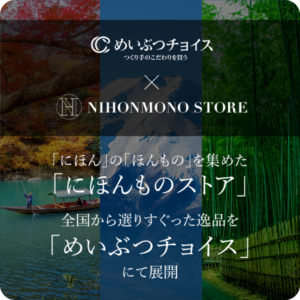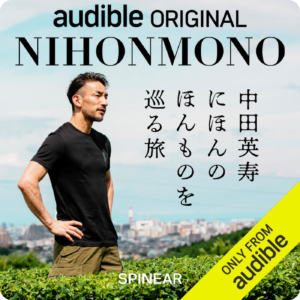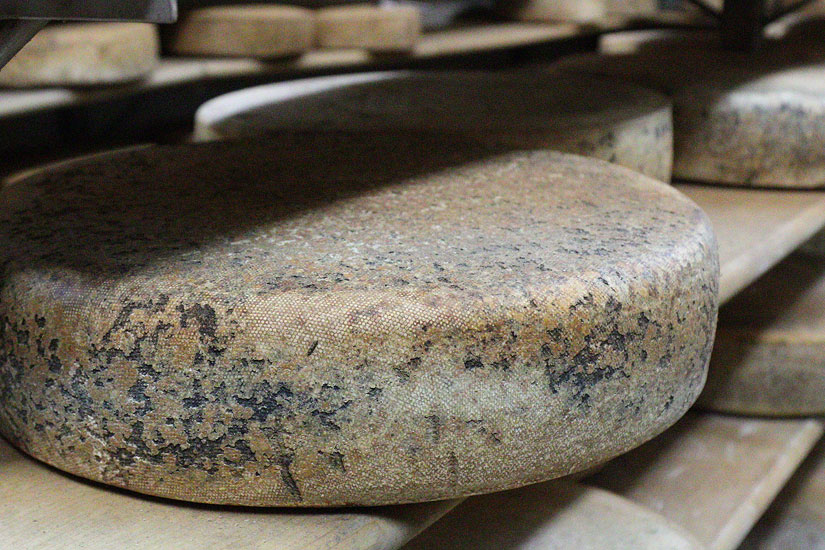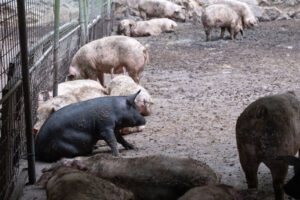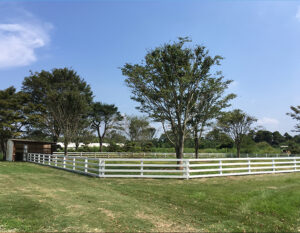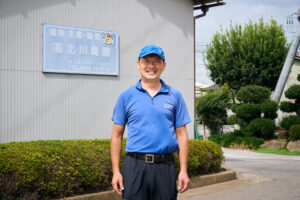In 1984, Mr. Zensaku Yoshida, who had been working for a company in Tokyo, started a dairy farm in the Kibi Plateau in Okayama Prefecture to make cheese. He raised healthy cows, and the cheeses he made from their milk, such as Camembert, Ricotta, and Caciocavallo, were highly praised by chefs at famous restaurants and spread throughout Japan.
Starting out as a “cow farmer” making cheese
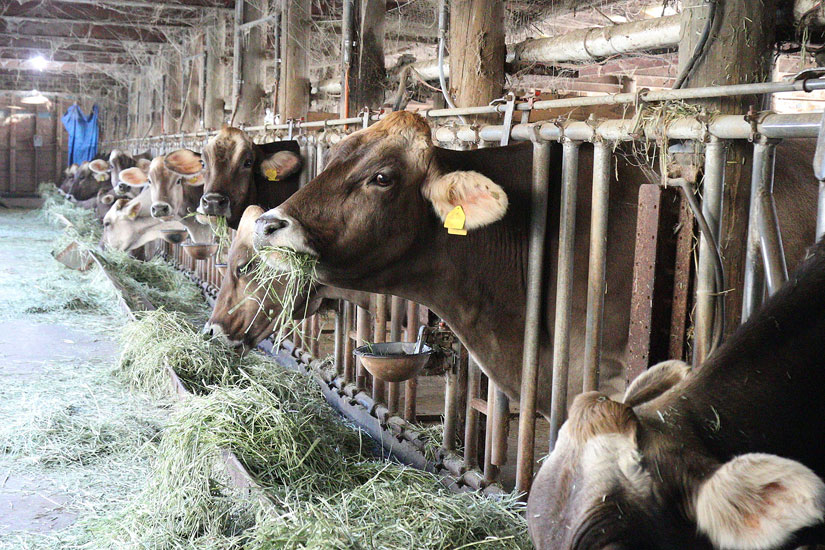
Yoshida Farm is located in the Kibi Plateau in central Okayama Prefecture, near Okayama Airport and about an hour’s drive from Okayama City. The farm is located on a rugged terrain at an elevation of about 370 meters above sea level, where about 60 Brown Swiss cows graze and a cheese factory is set up on the premises. It is a pioneer in Japan of “Fermier cheese,” which is made exclusively from the milk of its own cows.
Mr. Zensaku Yoshida, who started Yoshida Farm in 1984, was born in Okayama City in 1955. After graduating from the Faculty of Agriculture at Hokkaido University and working for a company in Tokyo for about five years, he decided to pursue his passion for manufacturing and started making cheese. Knowing that cheesemaking meant raising cows, Mr. Yoshida spent the first six months of his life training in dairy farming, and started making cheese three years after opening a dairy farm at his current location.
Making cheese from the milk of Brown Swiss cows
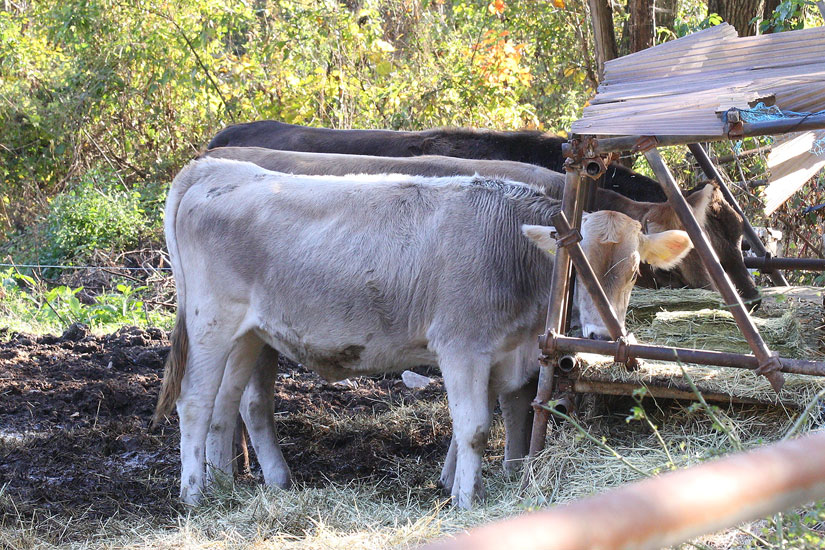
Mr. Yoshida says, “My parents were complete amateurs when it came to cow husbandry, but after five years of working together 365 days a year without a break, they felt they had stabilized the business. When you think about it, it is amazing that they were able to grasp the know-how of dairy farming and start making cheese in just five years,” says Zensaku Yoshida. Mr. Harano Yoshida, the son of Mr. Zensaku Yoshida, says, “I am very proud of him. He is the current leader of Yoshida Farm.
European farmers raise livestock suited to the climate of each region, and the cheese made from their milk is a specialty of each region. Gouda cheese, for example, is made from the milk of large, stout Holstein cows, which are perfectly suited to the plains of the Netherlands, and has become a representative product of the town of Gouda. Roquefort, one of the world’s three great blue cheeses, is made from the milk of sheep raised in the cool mountains of the village of Roquefort-sur-Surzon in the limestone region of southern France and aged in huge caves in the village. Also, in the mountains of northern Italy, goats that can climb up and down cliffs are raised, and “Caprino” made from their milk is famous.
Mr. Yoshida chose Brown Swiss beef, which is native to Switzerland, for its suitability for the Kibi Plateau. These cows are suited to go up and down mountainous terrain, and their milk has a good yield, which means that casein and other proteins, which are necessary solids for cheese making, remain in the milk after the production process. Currently, about 30 cows are milked daily at Yoshida Farm, and 550 to 600 liters are milked per day by machine. Compared to Holstein cows, the milk production is considerably lower, but the number of cows is kept to a level that allows the family to take care of the cows without strain.
Milk quality affects cheese 90%.
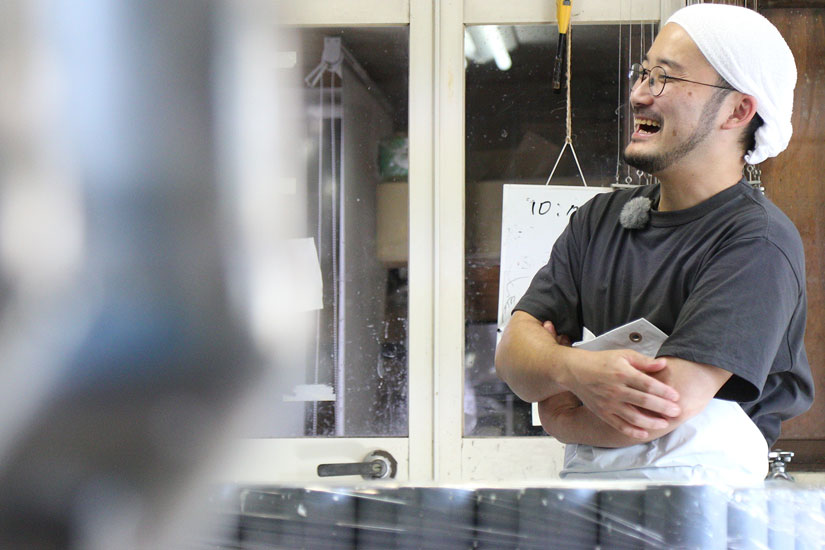
About 90% of cheese production is determined by the quality of milk, and humans can only compensate for about 10%. We may be able to bring it to an average, but if the raw milk is not good, we can never bring it to a satisfactory level,” says Harano.
Health management is carried out by paying the utmost attention to what the cows eat, such as hay, and to the rearing environment. While grazing, the cows eat grass outside, but they are also given plenty of “timothy,” a top-quality hay similar to that given to racehorses. This is crispy, dry hay with a good aroma, high protein and fiber content, and easy to break down in the body, so it does not put stress on the cows’ stomachs. Each cow receives at least 100 liters of water per day. Cows that walk around outside in this environment have their legs and backs strengthened, so they are able to give birth naturally without human assistance. Mr. Harano believes that the most important thing in cheese making is to keep the cows healthy, so he calls himself a “cowherd.
He grew up watching his parents, who never took a day off from taking care of the cows. Even so, he decided to take over Yoshida Farm because, “My parents seemed to be happy every day. They were blessed with good customers and were always busy, and it never seemed to be hard for them at all. It wasn’t until I actually started working with them that I realized how hard it is to be a cow farmer.
Learning cheese making from Mr. Pinna at the Italian Embassy
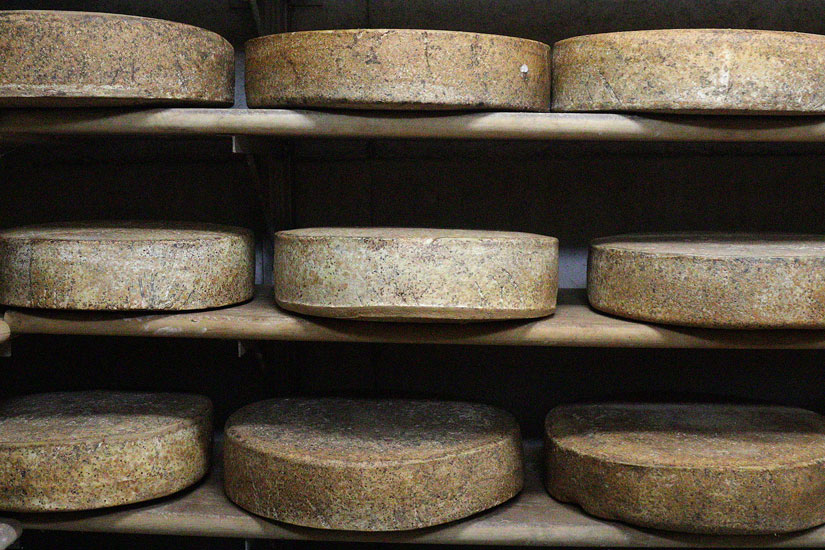
When his father, Zensaku Yoshida, started making cheese, there was only one small farm in Hokkaido and one in Nagano that combined dairy farming and cheese production, like Yoshida Farm. At a time when cheese was generally a processed cheese made by major dairy companies, Zensaku began making three types of cheese: Camembert, raclette, and fresh.
One day, Yoshida Farm’s Camembert cheese was discovered by Salvatore Pinna, a counselor at the Italian Embassy. He was impressed by the cheese he purchased at a bakery in Tokyo and said, “There is a Japanese man who makes cheese like this. I want him to make more cheese. In the past, Mr. Pinna worked for the Italian Ministry of Foreign Affairs and International Cooperation, where he was involved in foreign aid, including agricultural development cooperation. He is so passionate about cheese that he is looking for someone who can make delicious cheese wherever he goes in the world. He immediately contacted Yoshida Farm.
In 1990, Mr. Pina visited Yoshida Ranch and spent several days with Zensaku, teaching him how to make caciocavallo, mozzarella, and ricotta cheese. Mr. Zensaku worked hard to follow his instructions, and when he sent the finished cheeses to the Embassy, Mr. Pina responded, “You passed. Later, Mr. Tsutomu Ochiai, the first head chef of the Italian restaurant “Granata” in Akasaka, Tokyo, and now the owner chef of “La Bettra da Ochiai,” fell in love with Yoshida Farm’s mozzarella cheese and started selling it to other restaurants, and it spread to other restaurants as well. It was significant that the chefs at the restaurants supported the cheese in the early stages of its production. Later, people who learned about Yoshida Farm’s cheese at restaurants began ordering it directly from us.
Expressing the taste that can only be achieved in this region
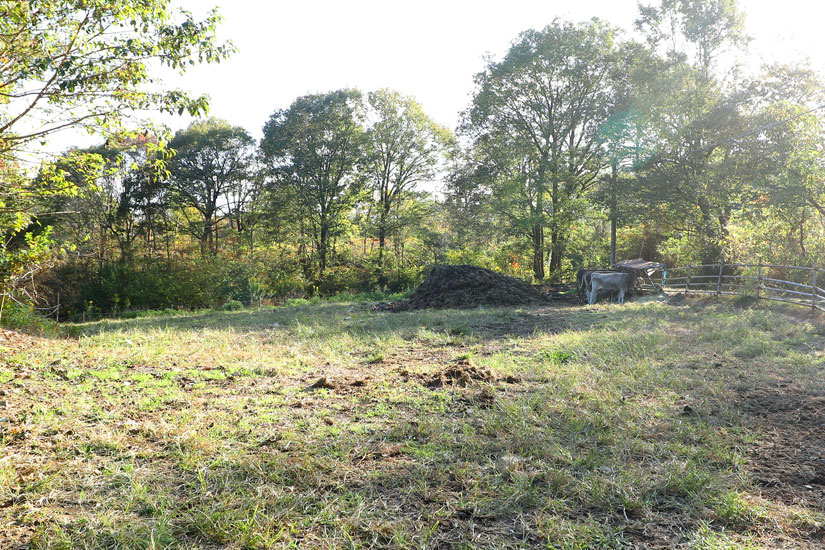
Currently, Yoshida Farm produces about 10 types of cheese, including Caciocavallo, Raclette, Parmigiano type “Kodaka,” Comte type “Majiyakuri,” Camembert, Mozzarella, and Italian Ricotta. Cheese is divided into natural cheese and processed cheese. Processed cheese, which is made by heating natural cheese and adding various ingredients, is made by first determining the flavor, as the lactic acid bacteria die and the cheese does not ripen during storage. Yoshida Farm’s cheeses are all natural cheese, and the taste changes over time as the raw milk is solidified, fermented, and aged by the action of microorganisms such as lactic acid bacteria. I think the change in taste is fun for the people who eat it,” says Harano.
If you have livestock, a pot, fire, and salt, you can make cheese. The lactic acid bacteria are a major factor in determining the taste of cheese. Yoshida Farm has been using lactobacilli for a long time, creating and passing them down from generation to generation. Since lactobacilli exist in nature, if milk is left outside at a temperature of about 20 degrees Celsius, the bacteria will come and multiply and make yogurt-like products. In order for the lactobacilli to work well, the speed at which the whey is released, the temperature, and the amount of water are adjusted during the cheese making process. This also leads to a crunchy texture.
Milk quality changes daily, and the fermentation and ripening of cheese depends on the temperature, humidity, and environment in which it is stored. It is interesting to make new discoveries in areas over which I have no control and over which I cannot control even if I wanted to,” says Harano.
Yoshida Farm’s cheese aging room is a semi-subterranean structure carved out of a slope. Two types of cheese are aged here: a Parmigiano type and a hard type called “Majakuri. The young cheeses are white, and a hard rind forms on the surface as the cheeses are repeatedly turned over daily by wringing out a towel dipped in salt water to wipe off the mold that naturally grows on the surface. This process is repeated daily, and a hard rind is formed on the surface. In the process of increasing the amino acid tyrosine, umami ingredients such as glutamic acid also increase. The product is left in the aging room for two to three years before shipping.
Building on Challenges While Having Fun
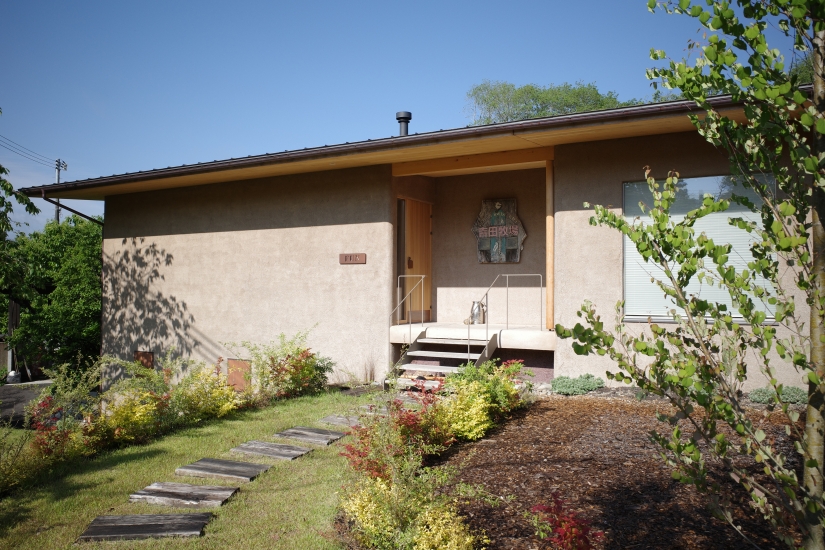
In the year that marked the 40th anniversary of Yoshida Farm’s establishment, a building was completed that serves as a storage room to preserve cheese while controlling its maturation, as well as a sales office and multipurpose space. The building was designed by Yoshifumi Nakamura, an architect who respects the beauty of natural materials and aging, and the impressive exterior walls are made from the feces of Yoshida Farm’s Brown Swiss cows. The building is constructed like a straw bale house, with blocks of straw piled on top of each other and hardened with soil and other materials. The name “FUN” is a play on the words “fun” and “feces,” which are synonymous with the enjoyment of a multi-purpose space.
The farm also faces the inevitable problem of cows that cannot be milked, which is an unavoidable part of running a dairy farm. Most of the male calves are entrusted to “Kajioka Farm” in Mine City, Yamaguchi Prefecture. This ranch handles everything from the production of cattle feed to breeding, fattening, and management of restaurants that serve the cattle they raise as meals. The cows that can no longer give birth to calves are sold to Sakaeya, a butcher store in Kusatsu City, Shiga Prefecture. Sakaeya is connected with producers at 10 ranches across Japan, and is able to process the cattle in the most appropriate way based on its knowledge of how the cattle were raised and with what kind of feed. These are two companies that Mr. Yoshida places great trust in. The cow hides are delivered from “Sakaeya” to “cornelian taurus by daisuke iwanaga,” a brand of made-to-order leather bags based in Kobe. I can raise them without any worries because I can entrust the end of their lives to someone I can trust,” says Yoshida Harano.
We can trust the end of our lives to people we can trust, so we can raise them with no worries,” says Yoshida. We don’t plan to make and sell many more. What I am focusing on is whether or not my family can continue to enjoy it. Dairy farming and cheese making are the same thing that we do every day, so whether or not we can continue to do it properly will make the difference between a better future and a worse one. I think that the challenges we find as we continue, even if they are small, will add up, and then we will finally be able to see the path we need to go down.
After passing on the cheese-making business to his son, the father, Zensaku Yoshida, is now growing wheat in the fields and taking up the challenge of baking bread as a hobby. Yoshida Farm’s style is for the family to enjoy each day’s accumulation, and to pursue their ideals through repeated discoveries.
